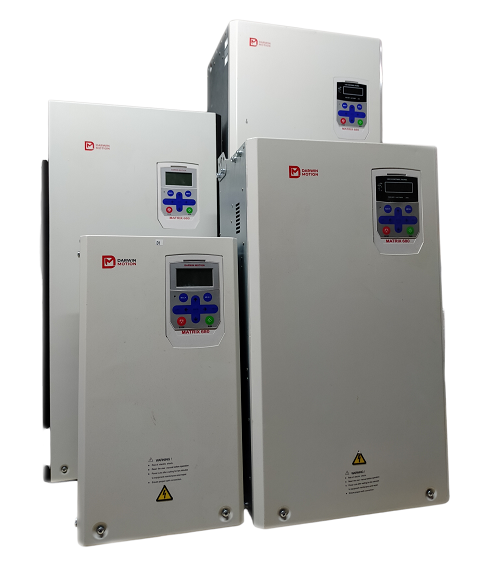Posted on 28th Nov 2024

A Variable Frequency Drive (VFD) is an essential device in the field of electrical engineering, particularly in motor control systems. VFDs provide precise control of the speed, torque, and direction of electric motors by adjusting the frequency and voltage supplied to the motor. This ability to control motor performance helps in energy savings, increased process control, and extended equipment lifespan.
In this article, we will explore the working principle of a VFD, the formula behind its operation, and how it achieves variable motor speed control.
A Variable Frequency Drive is an electronic device that controls the speed of an electric motor by adjusting the frequency and voltage of the power supplied to it. Typically, VFDs are used in AC (Alternating Current) induction motors, which are commonly used in industrial applications like pumps, fans, conveyors, HVAC systems, and many other types of machinery.
Rectifier (AC to DC): Converts the incoming AC power to DC.
DC Link: Smoothens the DC voltage and stores it temporarily.
Inverter (DC to AC): Converts the DC back into a variable AC output by adjusting the frequency and voltage.
The high frequency drive works by changing the frequency of the AC power supplied to the motor. By doing this, it manipulates the motor's speed and torque characteristics. Here's a step-by-step breakdown of how it operates:
AC Power Input: The VFD receives alternating current (AC) power from the electrical grid.
Rectification (AC to DC): The VFD first converts the incoming AC power to direct current (DC) using a rectifier. This is accomplished by a set of diodes or controlled thyristors that allow current to pass only in one direction, thus producing DC voltage.
DC Link (DC storage and smoothing): After rectification, the DC voltage is sent to a DC link which smooths out any fluctuations in the DC voltage and stores it temporarily. Capacitors or other energy storage components are used for this purpose.
Inversion (DC to Variable AC): The final step involves the inverter, which converts the DC voltage back into AC, but with variable frequency and amplitude (voltage). The inverter consists of a series of transistors or IGBTs (Insulated-Gate Bipolar Transistors) that switch the DC voltage on and off at high speeds, generating a pulse-width modulation (PWM) signal. The frequency of the AC output is determined by the VFD settings, and it can be varied from zero to the rated speed of the motor.
Control Output: The resulting AC power, now with adjustable frequency and voltage, is sent to the motor, causing it to run at the desired speed and torque.
The fundamental relationship between the speed of an induction motor and the frequency of the AC supply is governed by the following formula:
Ns=120×fP
Ns=P120×f
Where:
NsNs = Synchronous speed of the motor (in RPM)
ff = Frequency of the AC power (in Hz)
PP = Number of poles of the motor
From the above formula, it's clear that the speed of an induction motor is directly proportional to the frequency of the power supplied. By adjusting the frequency (using the VFD), the motor's speed can be varied. The number of poles (PP) is constant for a given motor, so the only variable affecting the motor speed is the frequency ff.
For example, a motor designed to operate at 60 Hz with 4 poles will have a synchronous speed of:
Ns=120×604=1800 RPM
Ns=4120×60=1800RPM
By using the VFD to reduce the frequency to 30 Hz, the synchronous speed will be:
Ns=120×304=900 RPM
Ns=4120×30=900RPM
Thus, the motor will run at 900 RPM instead of 1800 RPM, allowing for speed control.
Energy Savings: By adjusting the motor speed to match the required load, VFDs reduce energy consumption significantly, especially in applications with varying loads, like pumps and fans.
Precise Speed Control: VFDs provide fine-tuned control over motor speed, which is beneficial in processes requiring specific speed adjustments.
Reduced Mechanical Stress: Soft starting and stopping reduce mechanical stresses on both the motor and associated equipment, increasing the lifespan of the motor and mechanical components.
Improved Process Control: With the ability to adjust speed and torque, VFDs offer better process control, enhancing performance in industrial applications.
Cost Efficiency: Reduced energy usage and maintenance costs make VFDs a cost-effective solution in long-term operations.
The Darwin Motion Variable Frequency Drive (VFD) is a highly efficient technology that allows for flexible control over the speed, torque, and direction of AC motors. Its working principle revolves around adjusting the frequency of the supplied power, which directly affects the motor's speed. The fundamental formula connecting motor speed and frequency is simple but powerful, enabling precise control in a variety of applications. The use of VFDs offers several advantages, including energy savings, extended motor life, and enhanced process control, making them indispensable in modern industrial systems.